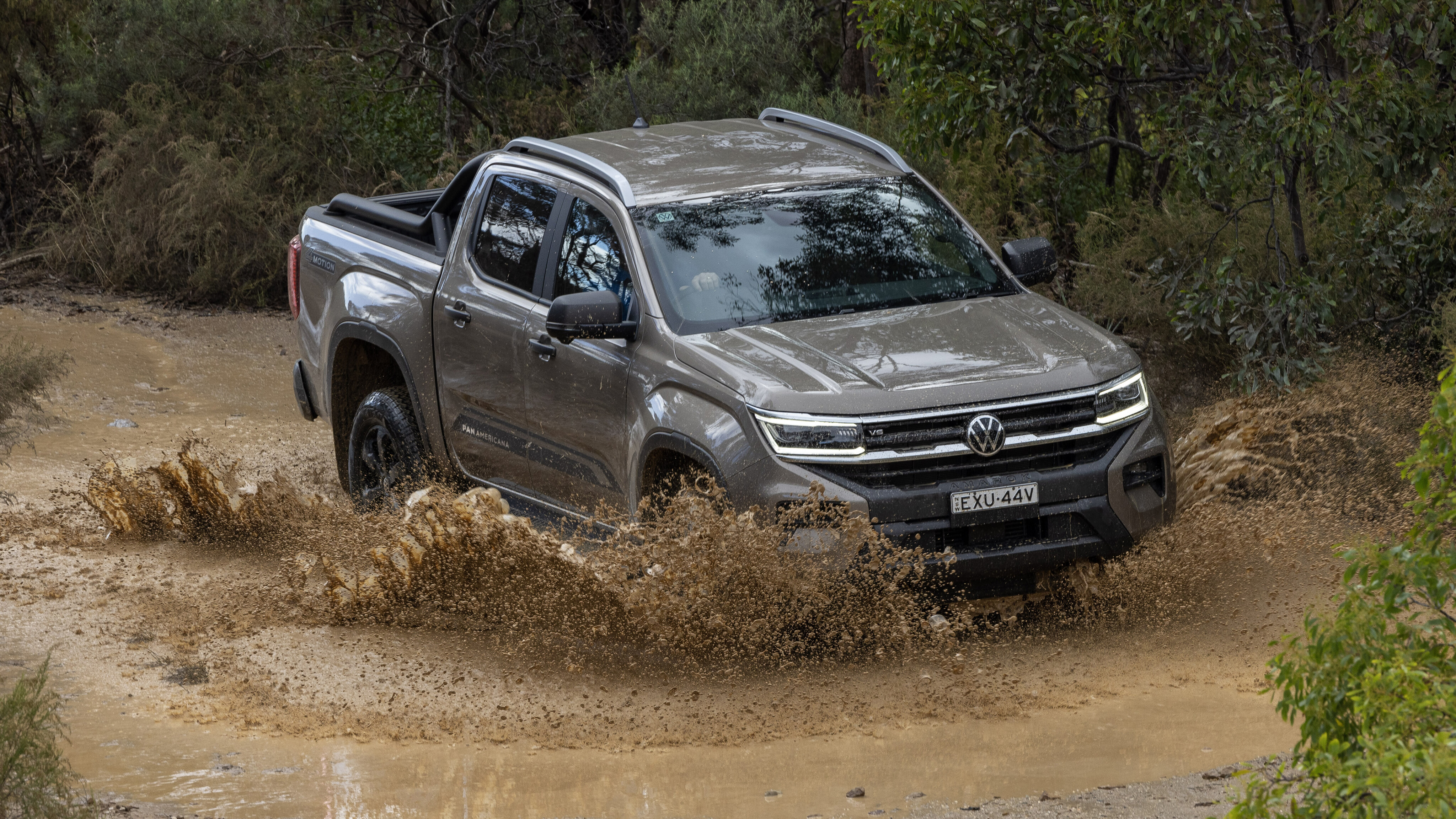
Score breakdown
Things we like
- Excellent dynamics and strong engines
- Great interior. The poshest dual-cab on sale?
- Exterior styling looks distinctly VW
Not so much
- Missing a few of the Ranger’s desirable features (Moulded tray step, ‘off-road’ menu etc)
- A/C controls and idle-stop buried in centre screen
- Shorter service intervals than old Amarok
What’s the best dual-cab ute you can buy in 2023? Until now the answer has been easy: the Ford Ranger.
Ford’s new-gen ute demolished its rivals in our recent dual-cab megatest and it’s miles ahead of the Toyota HiLux and Isuzu D-Max/Mazda BT-50 for driving dynamics, cabin comfort, useful tech and general refinement.
Now, though, the Ranger has sterner competition. This is the second-gen take on the popular Volkswagen Amarok – a ute that already carried a hard-won reputation for being the best-driving dual-cab on the market.
This time, thanks to an alliance between Ford and Volkswagen, the Amarok was actually co-developed with the new Ranger. That means all of the goodness that makes the Ranger so convincing should be present here, too.

And, of course, VW says it has improved on the Ranger’s recipe in a few key ways.
All of which raises a number of questions. Is the Amarok the new benchmark dual-cab? Is this simply a badge engineering exercise? Does it still drive as well? And how does it stack up for value? Let’s dive in.
JUMP AHEAD
- How much is it, and what do you get?
- How do rivals compare on value?
- Interior comfort, space and storage
- What’s it like to drive?
- How much fuel does it use?
- How safe is it?
- Warranty and running costs
- VERDICT
- Specifications
How much is it, and what do you get?
VW is offering the Amarok across five trim levels. Pricing starts at $52,990 before on-road costs for the entry-level Amarok Core, which is available solely with a 2.0-litre single-turbo diesel and a 10-speed automatic.
Stepping up to the mid-spec Life ($56,990) and Style ($66,990) adds a richer mix of standard equipment and a more powerful 2.0-litre bi-turbo diesel. For a $4000 premium, the Style can also be optioned with a 3.0-litre V6 turbo-diesel, which produces a healthy 184kW/600Nm.
There are two flagship trim levels. The off-road-focused PanAmericana ($75,990), which can only be had with the V6 diesel, or the more luxury-focused Aventura, which is available with either the V6 diesel or a 2.3-litre turbo-petrol engine. All these prices exclude on-road costs.

Both versions of the Aventura carry the same $79,990 price tag (before on-road costs).
The petrol unit is the same engine found in some Mustang models and it produces 222kW/452Nm, giving the Amarok a unique point of difference to its largely diesel-only rivals.
VW’s pricing puts the Amarok firmly at the premium end of the dual-cab segment, although it is loaded with standard equipment.
LED headlights, a large 10.1-inch central touchscreen, Apple CarPlay and Android Auto, wireless phone charging, alloy wheels and 20 new driver assist systems (which now include autonomous emergency braking and adaptive cruise control) are all standard across the range.

Every Amarok boasts a 3.5-tonne braked towing capacity.
There are also power windows, electric mirrors, roof rails, rain-sensing wipers, auto headlights, a tyre pressure monitoring system and a factory-fitted towbar with 12-pin plug. And every Amarok carries a 3.5-tonne braked towing capacity.
Stepping up to the Life variant adds the more powerful 2.0L diesel and further equipment like fog lights, a leather-trimmed steering wheel, rear disc brakes (instead of drums) and privacy glass. But it’s the mid-spec Style that really shines for value and standard gear.
Tipped to be the best-selling Amarok, the $66,990 (before on-road costs) Style adds larger 18-inch alloys, matrix LED headlights (which can mask out oncoming traffic), a bigger 12.0-inch portrait touchscreen, larger digital dials, dual-zone climate control with rear air vents, an upgraded audio system, 360-degree surround-view cameras, heated and power-adjustable front seats, a stitched ‘leather-look’ dash, a rear sports bar, and a drop-in tub liner. It also brings the option of the 3.0-litre V6 engine.
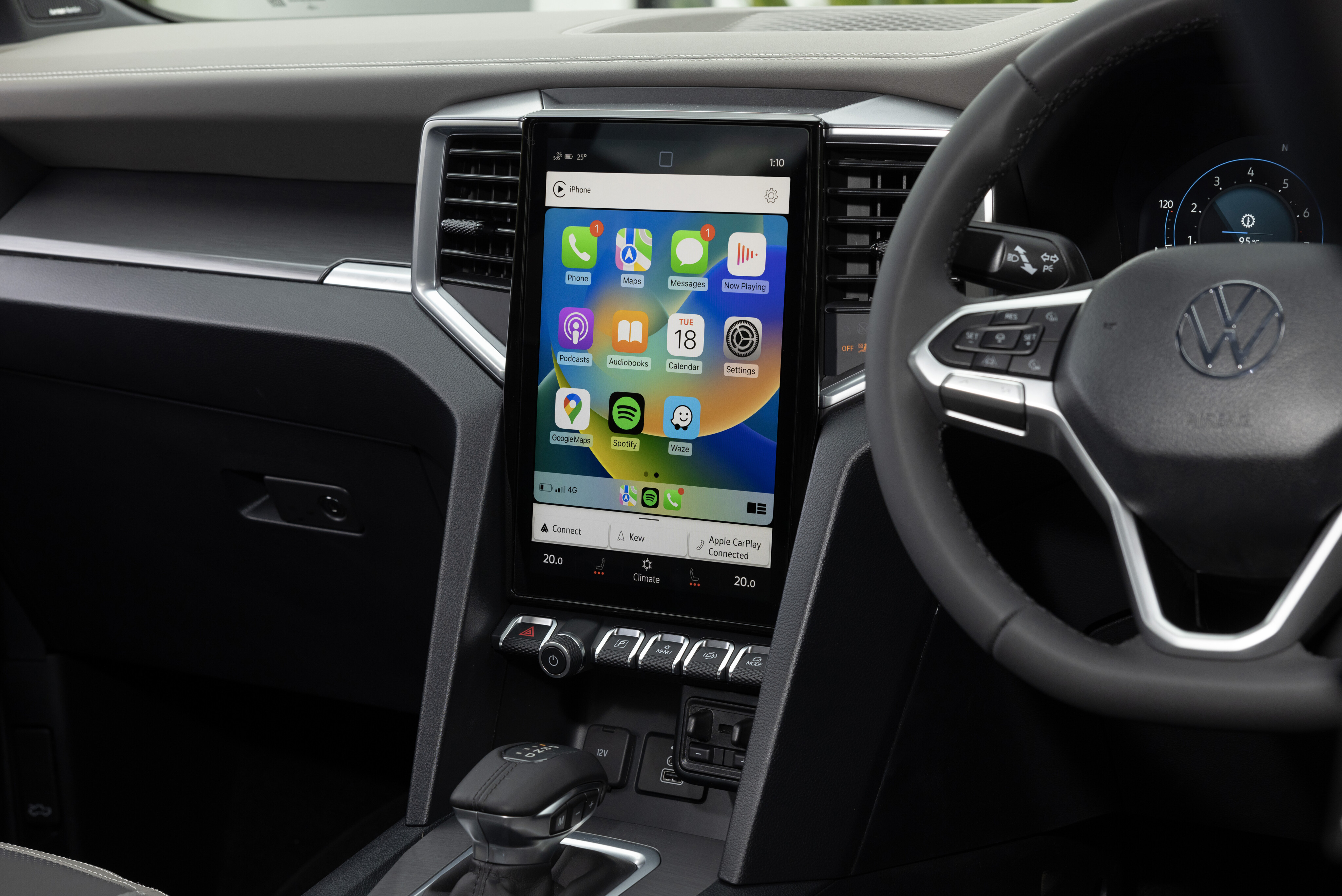
The Aventura has more of an on-road bias and boasts softer leather
The PanAmericana and Aventura flagships bring unique ‘X Design’ front bumpers, upgraded leather seats, spray-in tub liners and, notably, a ‘dynamic suspension package’ which replaces the twin-tube dampers of lesser models with a monotube setup for great control and comfort.
Separating the two flagship models is their focus. The PanAmericana is the more rugged of the pair, thanks to all-terrain tyres and harder-wearing ‘cricket ball’ leather trim.
The Aventura has more of an on-road bias and offers softer leather, an electric tray cover, huge 21-inch alloy wheels and the option of the 2.3L turbo-petrol, which VW hopes will entice current SUV owners to make the switch to a dual-cab ute.
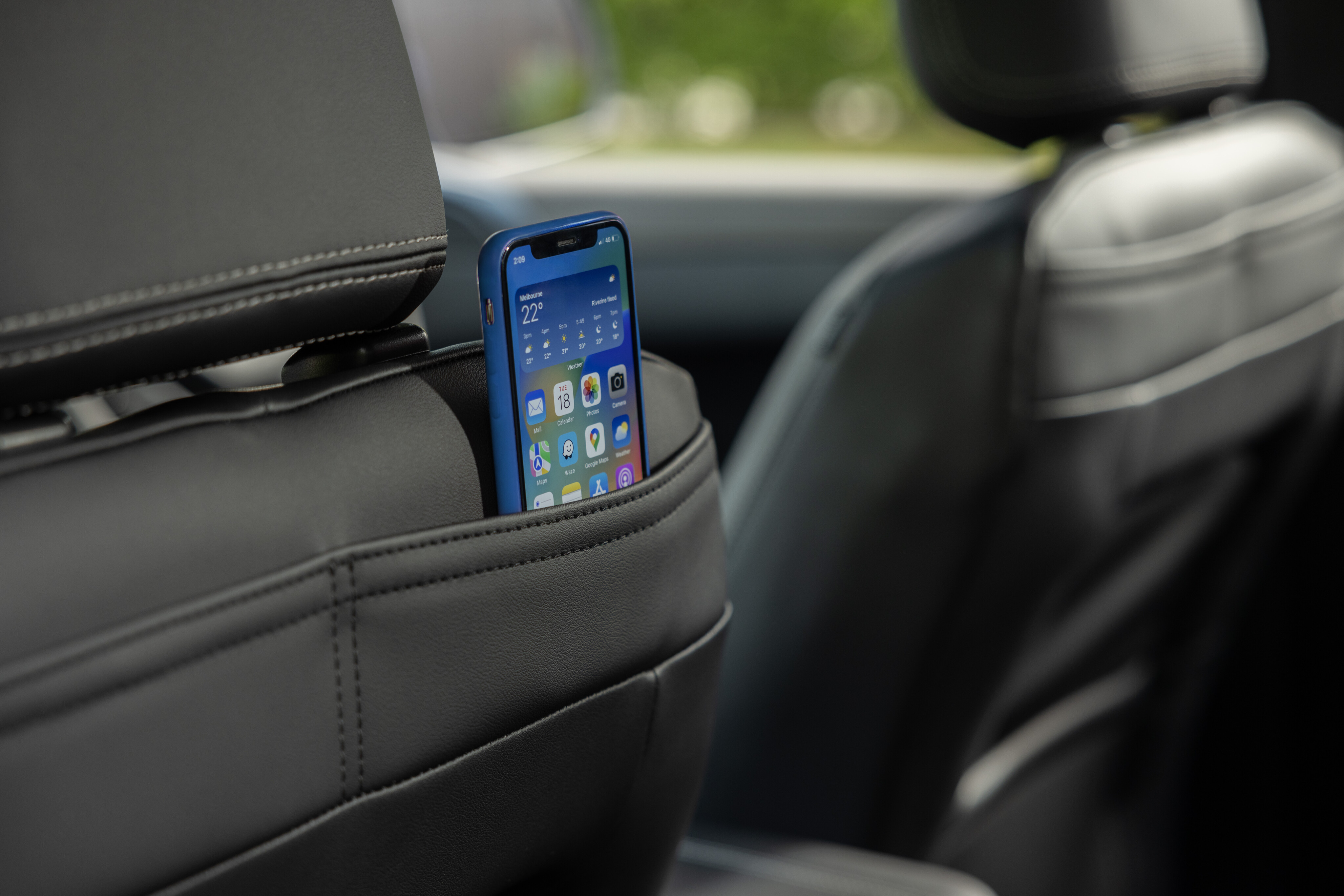
No matter which variant of Amarok you go for, you’ll be buying a ute that’s bigger in every key dimension.
Overall length is up by 96mm, the wheelbase has grown by a whopping 175mm (which translates into a roomier cabin), and the wading depth is now 800mm (which is a sizeable 300mm improvement). Tub volume is also up by 3.5 per cent and ground clearance has been lifted to 235mm.
As for what’s missing? The Amarok lacks a few desirable features currently available on the Ford Ranger – like a moulded rear box step for easier tub access and overhead auxiliary switches to connect accessories.

The Ranger’s useful 4x4 screen, which allows quick access to the forward-facing camera, diff-lock and other off-roading data, is also missing.
Also absent are the additional outboard cup holders you get in higher-spec Rangers, ‘zone’ lighting and a soft-open tailgate.
None of these omissions dilute the Amarok’s core goodness, of course, but they do give the Ranger a slight edge by certain criteria.

How do rivals compare on value?
Volkswagen has long positioned itself at the premium end of the mainstream market, and the Amarok is no different.
Compared with key competitors like the Mazda BT-50, Isuzu D-Max, Toyota HiLux and Nissan Navara, the Amarok is generally more expensive. But, it’s also a much newer design and trounces those rivals for cabin comfort, space, infotainment, quality and driving dynamics.
It’s also shot through with Aussie engineering, thanks to its Ranger platform partner. So while it does carry a slight price premium, the Amarok still offers strong value.

How it compares with the Ford Ranger is intriguing.
VW and Ford’s product planning teams have been clever in staggering the model grades of the two utes, so a direct comparison is tricky. The mid-spec Amarok Style V6, for example, is $5800 costlier than a mid-spec Ranger V6 Sport but it’s also better equipped thanks to its bigger touchscreen, wider digital instrument cluster and matrix LED headlights.
Comparing the Amarok Style with a Ranger Wildtrak is a better price match (just $200 splits them), but while the VW trumps the Ford with standard matrix LEDs, it misses out on the Wildtrak’s electric tray cover.
It’s a similar story in the flagship models. The Amarok Aventura has larger alloys than the Ranger Platinum (21s vs 20s) but is also $3000 dearer and lacks the Ford’s ventilated seats, heated steering wheel and flexible rack system which makes lighter work of carrying long items.

Interior comfort, space and storage
The Amarok’s upmarket cabin is one of its biggest strengths. It’s also an area where it outshines the Ford Ranger in a few key places.
Commonality between the pair is obvious in the large portrait touchscreen and stubby ‘E-Shifter’ (on mid-spec versions and above) but VW’s design team has done a marvellous job of giving the Amarok’s interior some unique and worthwhile touches.
The seats, for example, are a VW design and they aren’t only supremely comfortable, but, thanks to pronounced side bolsters and dense foam padding, they’re also snug and supportive.

Also top-notch is the driving position, and the leather-clad steering wheel is another area where the Amarok trumps the Ranger.
The wheel itself is still a Ford design, but VW has altered it so heavily you’d swear it was lifted straight from a Golf GTI. Either way, the Amarok has a much nicer wheel to hold than the one you get in the Ranger.
Front storage is generous thanks to roomy door pockets, twin central cup holders and two glove boxes stacked on top of one another ahead of the front passenger. The general sense of space and quality are now class-leading.

Moving to the Ranger’s platform has grafted an additional 175mm into the Amarok’s wheelbase, and the cabin now feels far roomier.
You notice the extra space most in the rear seats, where six-foot adults will find they have ample knee, shoulder and headroom. Materials quality does take a sharp step backwards in the rear seat (the door cards are covered in harder plastic) but the seat itself is comfortable, nicely bolstered and offers decent under-thigh support.
Rear passengers also score storage pockets sewn into the top of the front seats, a centre armrest and a 12V socket to charge devices.

So the Amarok is roomier, comfier and, thanks to its richer mix of materials and high level of fit and finish, its interior ambience and quality are class-leading.
Foibles? Aside from missing a few of the Ranger’s key features, like additional outboard cup holders and a shortcut button for the off-road screen, our main complaints surround the fiddly multimedia system.
While the screen itself is large, bright and quick to respond, VW has buried some of the key climate control functions into submenus. Want to change the fan speed? Dive into a submenu. Want to turn off the idle-stop? Dive into a submenu.
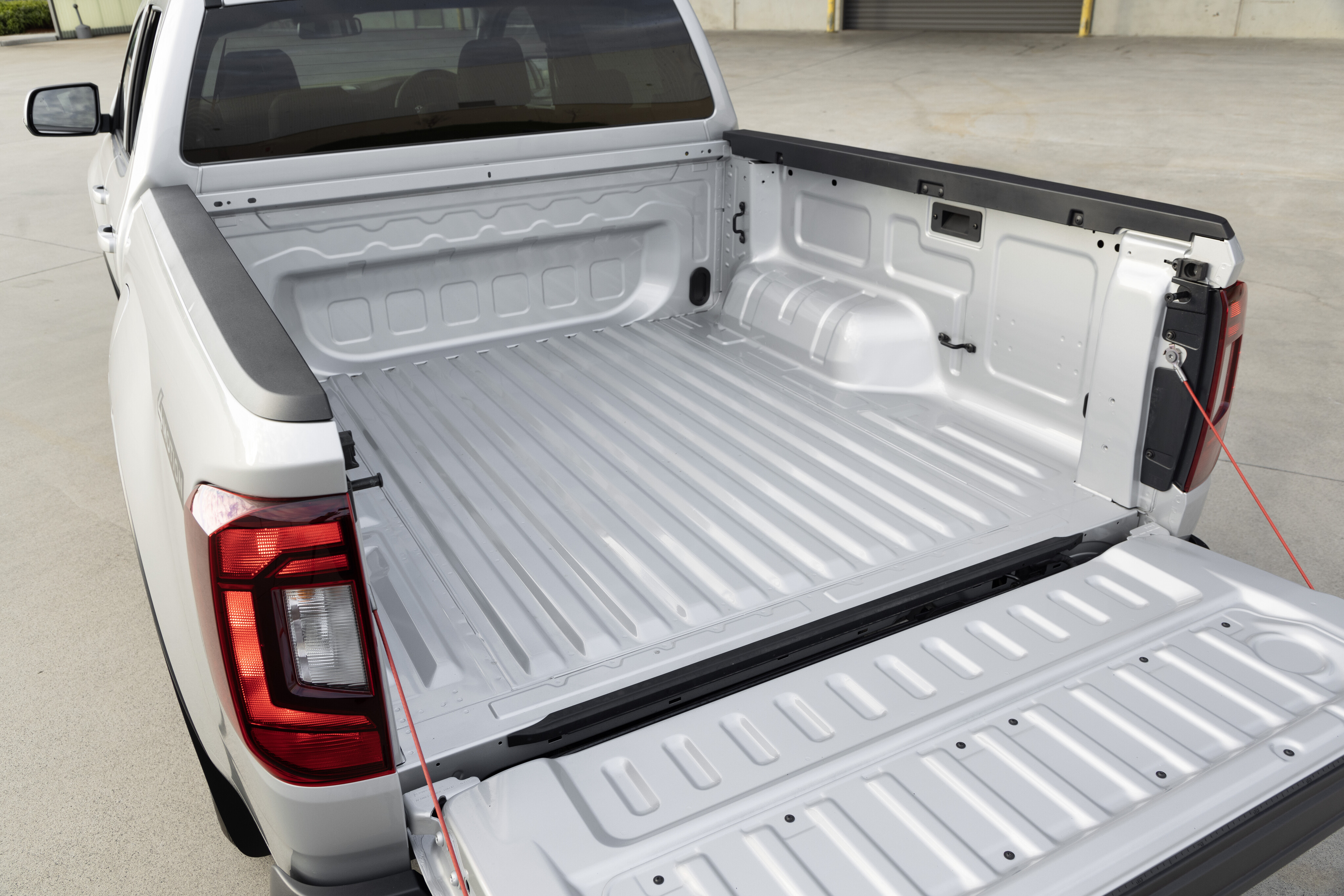
Again, these aren’t deal breakers, but they do become annoying when you use the vehicle every day. Even more annoying is knowing that the Ranger has physical buttons for these functions.
But there’s no denying the Amarok has one of the poshest interiors of any dual-cab now on sale. Minor ergonomic flaws aside, it’s beautifully made, nicely packaged and impressively practical.
As for the all-important tray, VW says total volume has gone up by 3.5 per cent – a 1200mm euro pallet will still fit between the wheel arches – but where buyers will really notice an improvement is in terms of the tray’s features. There are now six tie-down points instead of four, along with an LED light on each side and a 12-volt power socket.
What’s it like to drive?
The defining feature of the original Amarok was how it drove.
Its polished, car-like steering and dynamics often saw it win Wheels comparison tests, and even towards the end of its model life, it was still the benchmark dual-cab for ride and handling.
The good news is this new Amarok continues the trend. Overall refinement has improved and, on sweeping country back roads, the Amarok displays a sense of confidence, calmness and stability that sets it apart from its rivals.

It’s surprisingly fun and capable on a twisty road, too.
The steering is light and accurate, the body control and ride compliance are nicely judged for a workhorse and the brakes offer plenty of bite and stopping power. There’s also a surprising amount of grip available, even in the wet, especially in the flagship Aventura with its 21-inch alloys and high-quality 275/45 Goodyear rubber.
A few chinks exist in the Amarok’s dynamic armour, however. While the steering is effortless, keen drivers might prefer the setup in the Ranger, which offers greater weight and connection just off centre.

The Aventura rides well for a dual-cab with such large alloys.
Though the ride quality is generally good – the PanAmericana and Aventura’s monotube dampers are firm, but we prefer their greater control and expert tuning over lesser models – things can become terse on the Aventura’s 21-inch wheels when encountering poor roads. Generally, though, the Aventura rides well for a dual-cab with such large alloys.
As with a Ranger, the pick of the four-strong engine line-up is the 3.0-litre V6 turbo-diesel. While there isn’t a dud engine in the range – the 2.0L bi-turbo diesel in the Life and Style is gutsy, responsive and pairs well with the 10-speed auto – the 3.0L V6 is noticeably stronger.
It also sounds better and is the superior engine for towing, thanks to its healthier torque figure of 600Nm.
The 10-speed auto deserves recognition. It’s smooth and fast and the shift logic does a brilliant job of keeping both engines in the sweet spot of their power bands.
But the 2.3L turbo-petrol is intriguing. Volkswagen is hoping this high-output unit entices buyers that have previously owned SUVs – and we can certainly see the appeal.

Around town it’s quiet and responsive, but on the open road it does lend the Amarok a different personality.
Where most dual-cab utes surf on low-down diesel torque, the 2.3L makes its grunt higher in the rev range (peak power is at 5900rpm, torque at 3350rpm) so both the engine and transmission feel like they’re working harder to shift the Amarok’s 2.4-tonne mass. And although there’s no shortage of performance – on a twisty road the 2.3L Aventura is hilariously grippy and quick – we do wish the 2.3L sounded a touch angrier.
There is some distant four-cylinder induction noise, but it’s certainly not the fruity soundtrack the same engine makes in a Mustang.

Off-road, the Amarok is more capable than ever.
Shorter overhangs, better ground clearance, a more advanced four-wheel-drive system and six drive modes (including Mud, Sand/Snow and Towing/Heavy Load) combine to make it impressively accomplished on slippery tracks.
Every model in the range includes a mechanical rear diff lock and approach/ramp over and departure angles are 30/22 and 25.6 degrees respectively.
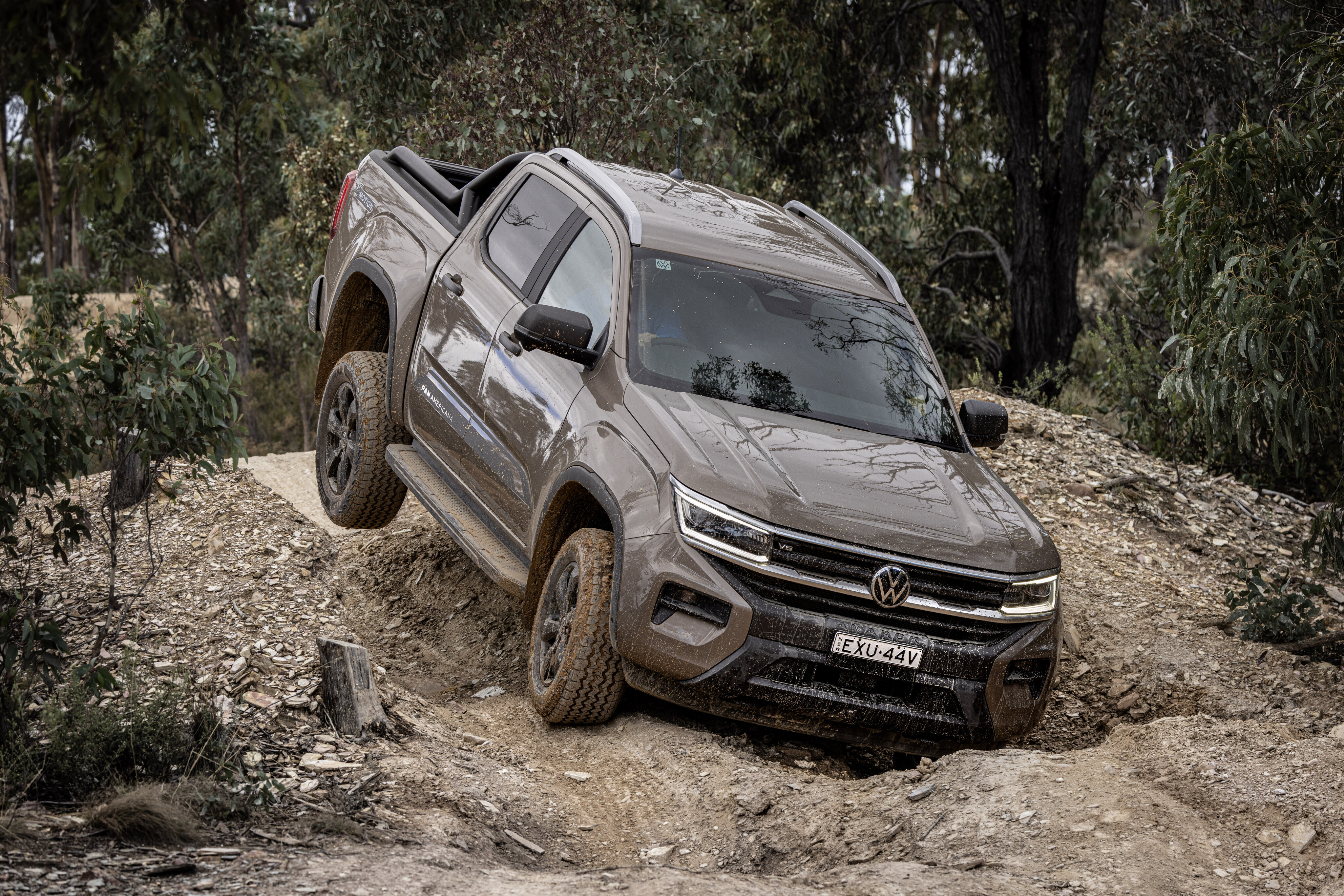
If any of the terms in this section have left you scratching your head, these articles will help bring you up to speed!
How much fuel does it use?
Your Amarok's thirst depends on which engine you go for.
The thriftiest option is the 2.0L bi-turbo diesel in the mid-spec Amarok Life and Style, which has a combined-cycle consumption rating of 7.2L/100km. The single-turbo 2.0L in the base Core is next best at 8.0L/100km.
An official rating of 8.4L/100km for the 3.0L V6 is impressive given its additional capacity and performance compared with the 2.0-litre options.
Unsurprisingly, the 2.3L turbo-petrol engine in the flagship Aventura is the thirstiest engine of the line-up. Keep a light foot and the 2.3L might return its official figure of 9.9L/100km, although we’d wager its real-world number will be much higher.

How safe is it?
The Volkswagen Amarok is currently the safest dual-cab ute you can buy.
It was awarded a five-star safety rating by ANCAP in April 2023, with the breakdown of its crash rating being narrowly superior to the Ford Ranger on which it’s based.
In testing conducted by Euro NCAP, the Amarok was awarded 86 per cent for adult protection, which is two per cent higher than the Ford Ranger, thanks to a better whiplash protection result.

Every Amarok is fitted with nine airbags including one between the front seats to prevent head clashes and side curtain airbags.
A host of active safety systems are also available and we’ve listed the main ones here.
| 2023 Volkswagen Amarok safety features | |
|---|---|
| Autonomous emergency Braking | Trailer sway control |
| Adaptive cruise control | Speed sign recognition |
| Lane-keep assist | Blind-spot monitoring |
| Lane departure warning | 360º surround-view cameras |
| Driver fatigue warning | Roll-over mitigation |

Warranty and running costs
The Amarok is covered by Volkswagen’s five-year/unlimited-kilometre warranty.
Service intervals are every 12 months or 15,000km and while that’s industry standard, the kilometre interval is actually shorter than the old Amarok which required a trip to the dealer every 20,000km.
Maintenance costs are competitive and match the Ford Ranger thanks to pricing that spans $329 and $414 per service. Volkswagen also offers buyers a five-year care plan for $1800.
The Amarok’s service intervals are superior to a Toyota HiLux which requires a dealer visit every six months or 10,000km. It means a HiLux will cost you $1740 over the first three years of ownership, whereas the Amarok is $1072, a saving of $668.

VERDICT
So is the Amarok now the benchmark in the dual-cab segment?
It’s so closely matched with the Ford Ranger that you could give the pair tied honours – but when you start to split hairs, it’s the Ford that just edges ahead.
The Amarok misses out on a few of the Ford’s desirable features and, while the VW’s cabin is the most luxurious on sale (its seats are especially great), functionality isn’t quite as good due to burying key functions inside the touchscreen.
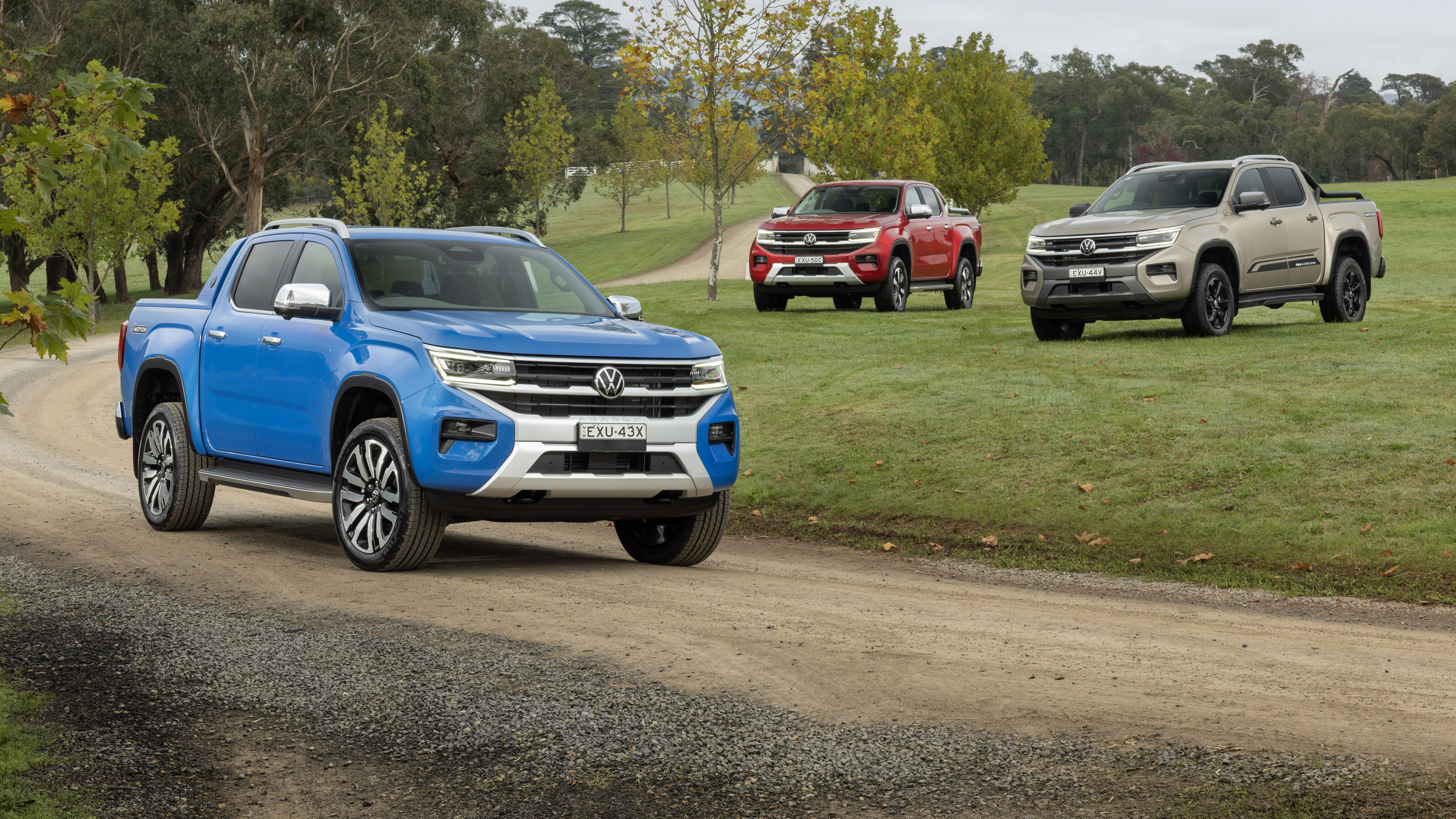
But if you can overlook those minor niggles, then the new Amarok is indeed a class leader.
Its tough looks are distinctly VW, and it’s a huge improvement over the old Amarok for cabin space, standard safety gear, infotainment and dynamics.
We’d gravitate towards the V6 Style and PanAmericana as the picks of the model range, but every Amarok feels impressively polished and is oozing with upmarket appeal.
| 2023 Volkswagen Amarok Style specifications | |
|---|---|
| Body | four-door, five-seat dual-cab ute |
| Drive | four-wheel |
| Engine | 3.0-litre V6 turbo-diesel |
| Power | 184kW @ 3250rpm |
| Torque | 600Nm @ 1750-2250rpm |
| 0-100km/h | 8.2sec (estimated) |
| Transmission | 10-speed automatic |
| Weight | 2319kg (tare) |
| Fuel consumption | 8.4L/100km |
| L/W/H | 5350/1910/1886mm |
| Wheelbase | 3270mm |
| Brakes | disc (front/rear) |
| Tyres | 255/65 R18 |
| Wheels | 7.5 J x 18-inch alloy |
Score breakdown
Things we like
- Excellent dynamics and strong engines
- Great interior. The poshest dual-cab on sale?
- Exterior styling looks distinctly VW
Not so much
- Missing a few of the Ranger’s desirable features (Moulded tray step, ‘off-road’ menu etc)
- A/C controls and idle-stop buried in centre screen
- Shorter service intervals than old Amarok



COMMENTS